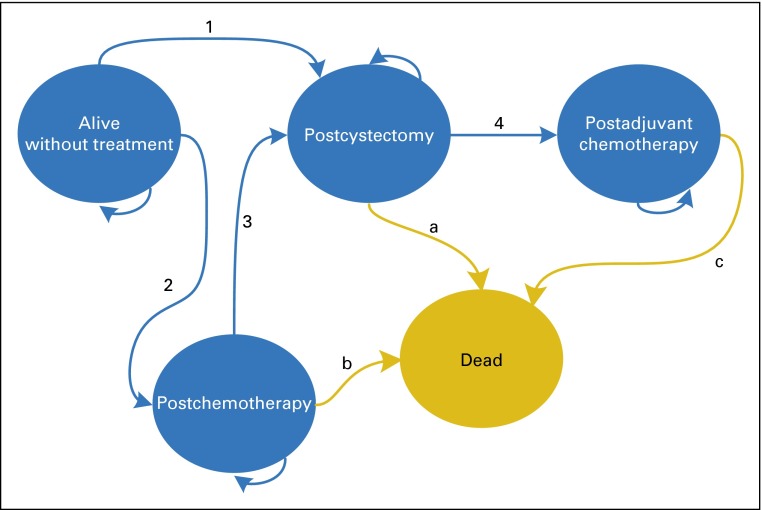Fig 2.
Multistate model of treatment strategies. This bubble diagram demonstrates how patients were traced over time within the multistate model according to treatment and survival history. Each bubble represents a possible health state. The included health states were mutually exclusive, meaning that at each time point, a patient could reside in only one health state. Arrows labeled with a number or letter refer to a transition or change in health states as time evolves, that is, treatment initiation or death. All patients started in the alive-without-treatment state at the time of clinical staging and subsequently moved to the applicable post-treatment state at the time that particular treatment was initiated. Patients who died moved to the dead state, an absorbing health state, at the time of death, and patients who survived remained in their post-treatment state until the end of the study or lost to follow-up (right censored). The arrows that connect to the same health state from which they arise indicate that patients could remain at risk and stay within the same health state if they had not been right censored, changed treatment status, or experienced death. Transitions indicated by arrows a, b, and c were used for the estimation of effectiveness of treatment strategies on all-cause mortality: a, used for estimation of the effect of preoperative chemotherapy (with and without censoring for transition 4), also used for estimation of the death rate in the reference group, cystectomy; b, used for estimation of the effect of chemotherapy alone; c, used for estimation of the effect of adjuvant chemotherapy, also used for estimation of the death rate in the reference group, cystectomy. Transitions 1, 2, 3, and 4 were used for classifying patients according to treatment strategy: 1, used to classify patients as having cystectomy alone; 2, used to classify patients as having chemotherapy alone; 3, used to classify patients as having preoperative chemotherapy; 4, used to classify patients as having adjuvant chemotherapy. For more details on the multistate model, see the Methods section.

